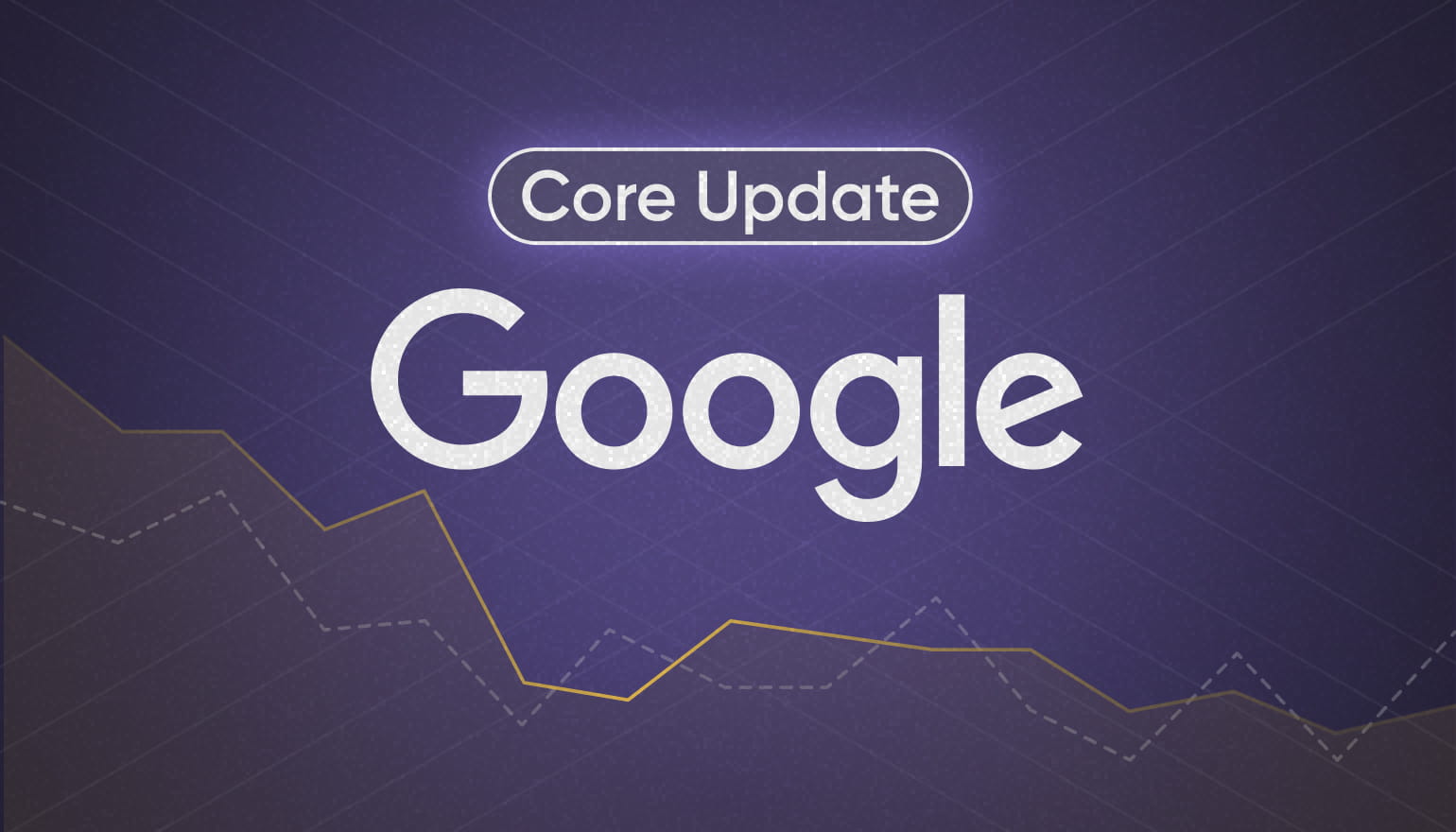How to Recover from a Google Core Update (Step-by-Step)

Few things cause more panic among digital marketers and website owners than this notification:
“Your website traffic dropped suddenly after a Google update.”
If you’ve ever woken up to find your rankings gone or your analytics chart diving, you’ve probably been hit by a Google Core Update.
But here’s the truth a drop after a core update doesn’t mean your website is “penalized.” It means Google has changed how it evaluates quality, relevance, and authority.
In this detailed guide, we’ll walk you through exactly how to recover from a Google Core Update step-by-step and rebuild your SEO performance stronger than before.
What Is a Google Core Update?
A Google Core Update is a major algorithm adjustment that affects how search results are ranked.
Unlike smaller updates that fix technical issues or spam, core updates focus on improving result quality by reevaluating content, authority, and user satisfaction.
In other words, Google’s goal is simple:
Reward high-quality, trustworthy, and relevant content — and reduce visibility for thin, outdated, or manipulative content.
These updates typically roll out several times a year, and their effects can be massive both positive and negative.
Step 1: Don’t Panic — Analyze Before You Act
When you notice a traffic drop, pause before making changes. Not every fluctuation means you’ve done something wrong.
First, verify the update’s timing:
- Did the drop occur during a confirmed Google Core Update rollout?
- Or could it be seasonal, tracking, or content-related?
Use tools like Google Analytics and Google Search Console to check:
- Which pages lost traffic
- Which keywords dropped
- When the decline started
If the timing matches a core update, it’s time to begin your recovery process.
Step 2: Identify What Changed in the Update
Every core update emphasizes different aspects of Google’s ranking systems such as E-E-A-T, content helpfulness, or user experience.
Here’s what each means:
- E-E-A-T (Experience, Expertise, Authoritativeness, Trustworthiness): Google wants content created by credible experts with firsthand experience.
- Helpful Content System: Prioritizes content written for users, not algorithms.
- Page Experience: Focuses on site speed, mobile usability, and interaction quality.
Look at credible SEO discussions or Google’s own announcements (without blindly copying others’ strategies) to understand what type of sites were most impacted.
Example:
If product review sites dropped, Google likely refined its “experience and trust” metrics.
Knowing the why helps you plan the how.
Step 3: Audit Your Content Thoroughly
Your recovery starts with an honest content audit.
Go through your site page by page and ask:
- Does this page offer real value, or just reword existing information?
- Is it written by someone with actual expertise or experience?
- Is the content up-to-date, accurate, and comprehensive?
- Does it match the search intent of its target keyword?
- Is it written for humans first or just to stuff keywords?
Use a spreadsheet to track each page’s performance metrics, and categorize content as:
– Keep
– Improve
– Remove or merge
Focus on improving your best-performing pages first.
Step 4: Improve E-E-A-T (Experience, Expertise, Authoritativeness, Trustworthiness)
If you want to recover and stay recovered you must build real credibility.
Here’s how:
- Show the author’s credentials – Add author bios, qualifications, and experience.
- Use your real name or brand – Avoid generic or anonymous content.
- Cite credible sources – Reference trustworthy data, studies, or examples.
- Include testimonials or case studies – Demonstrate proven results.
- Be transparent – Add contact info, about pages, and clear brand identity.
Google rewards sites that show who is behind the content and why they’re worth trusting.
Step 5: Improve Content Depth and Relevance
Core updates often prioritize content quality and topical authority.
Ask yourself:
- Does your content answer all user questions around a topic?
- Are you covering the broader topic or just chasing keywords?
How to improve:
- Expand shallow content into comprehensive guides.
- Add subtopics, FAQs, and related examples.
- Remove outdated statistics or irrelevant sections.
- Use semantic SEO include related entities, synonyms, and context-based phrases.
When you become the most complete, useful source on a topic, Google notices.
Step 6: Analyze Search Intent and Align Each Page
Many ranking drops happen because of mismatched intent.
Example:
You target “best SEO tools,” but your page reads like a sales pitch instead of an informative list Google may replace you with a review blog instead.
Revisit your top keywords and ask:
- Is this query informational, transactional, or navigational?
- Does my content truly answer what users are searching for?
Match your format to intent:
- “How to” = Guides or tutorials
- “Best” or “Top” = Comparisons or lists
- “Buy” or “Hire” = Landing pages or sales pages
The more closely your content fits user intent, the faster you recover.
Step 7: Refresh and Republish Outdated Content
Freshness matters especially post-update.
Google prefers content that’s recent, relevant, and regularly updated.
- Update old stats, screenshots, and references.
- Add 2026 or current-year insights.
- Rewrite intros and conclusions for modern relevance.
- Update meta titles and descriptions with better hooks.
Even small updates can reignite rankings for content that’s otherwise strong.
Step 8: Strengthen Internal Linking
Internal linking helps Google understand your site’s structure and topic relationships.
When done strategically, it redistributes authority across your pages.
Action steps:
- Link from high-authority pages to those that lost rankings.
- Use descriptive anchor text (e.g., “learn how to optimize meta titles” instead of “click here”).
- Create content clusters link related blogs under a single main topic page.
The goal: Make it easy for both Google and users to navigate your expertise.
Step 9: Optimize Technical and User Experience
Core updates often adjust weightings for page experience and technical SEO.
Ensure your site is:
– Mobile-friendly
– Fast-loading
– Secure (HTTPS)
– Easy to navigate
– Free of intrusive pop-ups
Run audits for broken links, slow pages, or duplicate content.
When your technical foundation is solid, your content can shine again.
Step 10: Rebuild Backlinks Naturally
Sometimes rankings drop because competing sites gained stronger, more relevant backlinks.
Don’t buy links earn them by:
- Creating original research or case studies
- Publishing expert insights others want to cite
- Guest posting on niche-relevant sites
- Building relationships with industry peers
A few high-quality backlinks from trusted sources can do more than dozens of random ones.
Step 11: Monitor, Measure, and Iterate
Recovering from a core update isn’t instant it’s a gradual process.
Keep tracking your:
- Organic impressions and clicks (Search Console)
- Keyword movements
- Bounce rate and engagement metrics
Note: Recovery can take weeks or months until the next algorithm recalibration.
But when Google re-crawls your improved pages, you’ll often see steady traffic growth.
Bonus: What Not to Do After a Core Update
Avoid these common mistakes:
– Deleting large amounts of content overnight
– Keyword-stuffing or rewriting for bots
– Chasing “quick fixes” or spammy backlinks
– Changing URLs unnecessarily
– Giving up too early
Core updates test patience and consistency not shortcuts.
Final Thoughts
Recovering from a Google Core Update is like rebuilding trust it takes time, effort, and authenticity.
The key is not to chase algorithms, but to align with what Google truly wants:
– Helpful content
– Real expertise
– Positive user experience
Every update is a reminder to focus less on “what Google wants” and more on “what users need.”
Because when you serve your audience well, your rankings follow naturally.
So don’t fear the next update prepare for it.
Your best defense is always quality, clarity, and credibility.
Digilab Insights
Digilab Insights, your trusted source for expert-driven practical tips, proven strategies, and the latest trends in SEO, content marketing, social media, paid ads, and digital growth.
Recent Posts
The Science of Evergreen Content: How to Stay Relevant for Years
October 26, 2025Content Velocity: The Secret to Outranking Bigger Brands
October 26, 2025How to Recover from a Google Core Update (Step-by-Step)
October 26, 2025Local SEO Without a Physical Store: Free Global Freelancer’s Guide
October 24, 2025Categories
Related Articles
Local SEO Without a Physical Store: Free Global Freelancer’s Guide
If you’re a freelancer, consultant, or online business owner, you’ve probably heard...
ByDigilab InsightsOctober 24, 2025Voice Search Optimization: How to Rank for Spoken Queries
“Hey Google, how do I get more traffic to my website?” That...
ByDigilab InsightsOctober 24, 2025Internal Linking Strategy: The Hidden SEO Power Move
If you’ve been chasing backlinks, keywords, and content updates but still can’t...
ByDigilab InsightsOctober 24, 2025How to Write Meta Titles That Get 2x More Clicks
You can write the best article in the world, but if no...
ByDigilab InsightsOctober 23, 2025








Leave a comment